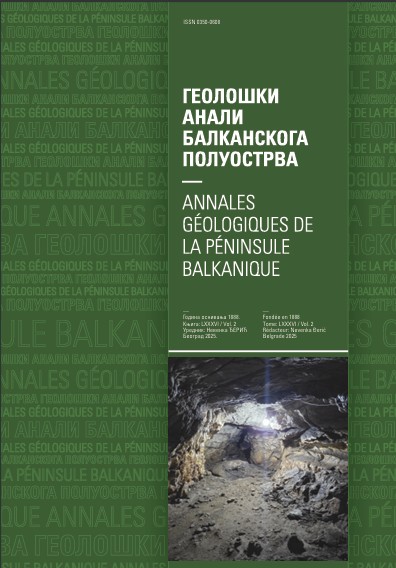Ispitivanje porekla i uslova taloženja uljnih škriljaca Aleksinačkog basena na osnovu sastava neorganske i organske supstance
Investigation of origin and sedimentation conditions of the Aleksinac oli-shales on the basis of inorganic and organic matter composition
Abstract
Aleksinac basin is the biggest oil shale deposit in Serbia and therefore was investigated by numerous authors. The eastern border of the Aleksmac basin is represented by crystalline schists, while the younger Neogene sediments are settled on the west. Presence of the fresh water fossil fauna indicates the Lower Miocene age of the sediments (Stevanović, 1969).
After detailed sedimenlological analysis, the following facies were distinguished: aluvial facies represented by clastic sediments; swamp facies represented by coal; marginal lacustrine facies containing tuffs, siliceous sediments, oil shales and dolomites and intrabasinal facies represented by tuffs, tuffaceous sediments with analcime and marly sediments.
The deposition of oil shales is separated in two phases. In the first phase, oil shales are alternating wilh siliceous sediments forming the underlying series of the main coal-seam. During the second phase, oil shales were deposited in changement with dolomites, forming the overlying series of the main coal seam.
Numerous field and lab investigations of inorganic and organic part of the oil shales indicate the conclusion that oil shales were formed in the marginal part of the shallow, fresh -water lake basin, alter the deposition of algal material.
Copyright (c) 1997 Geološki anali Balkanskoga poluostrva

This work is licensed under a Creative Commons Attribution 4.0 International License.










